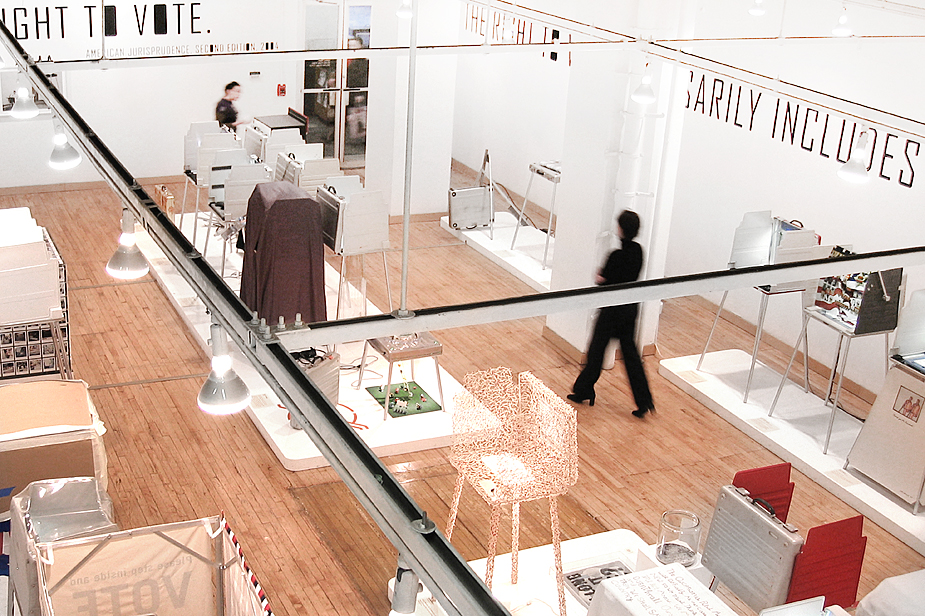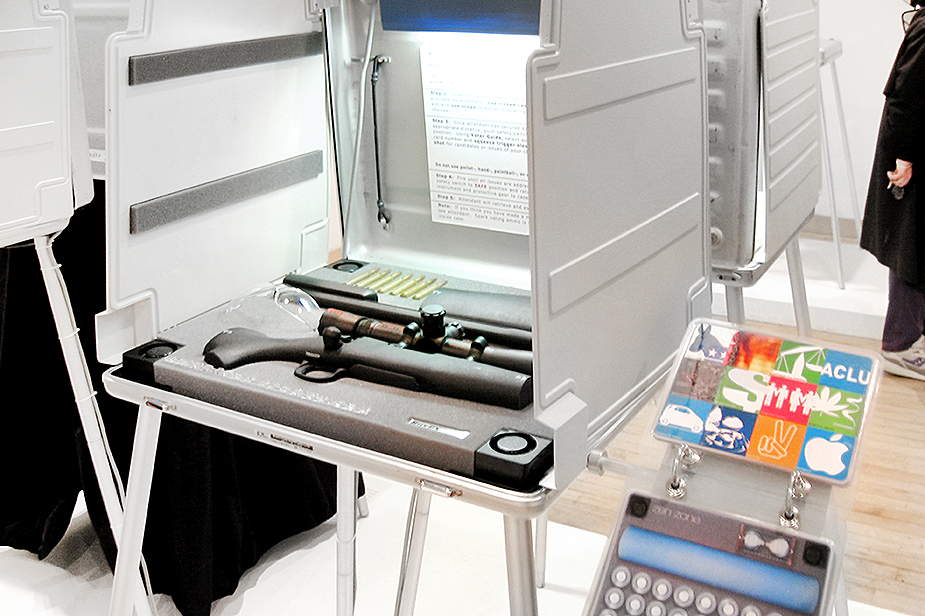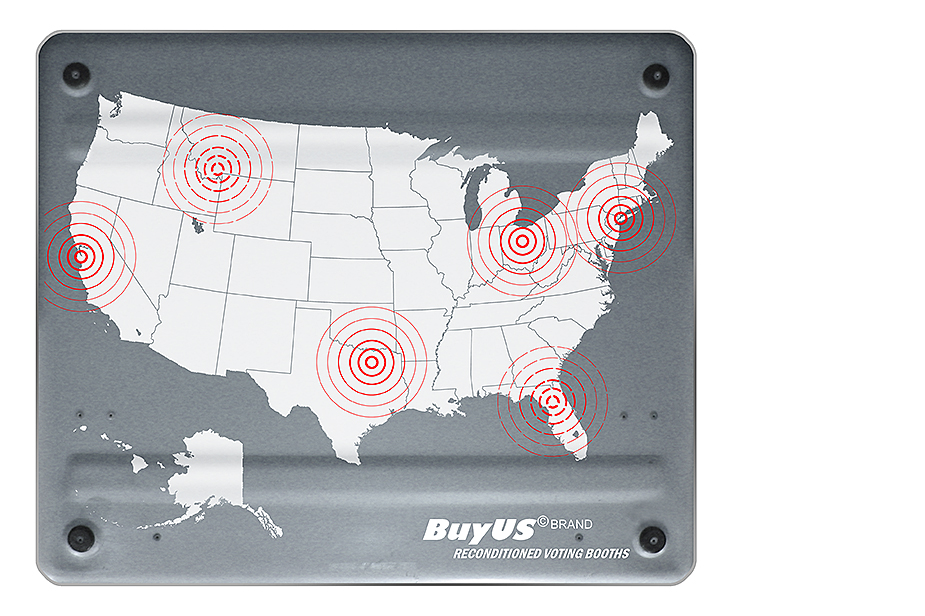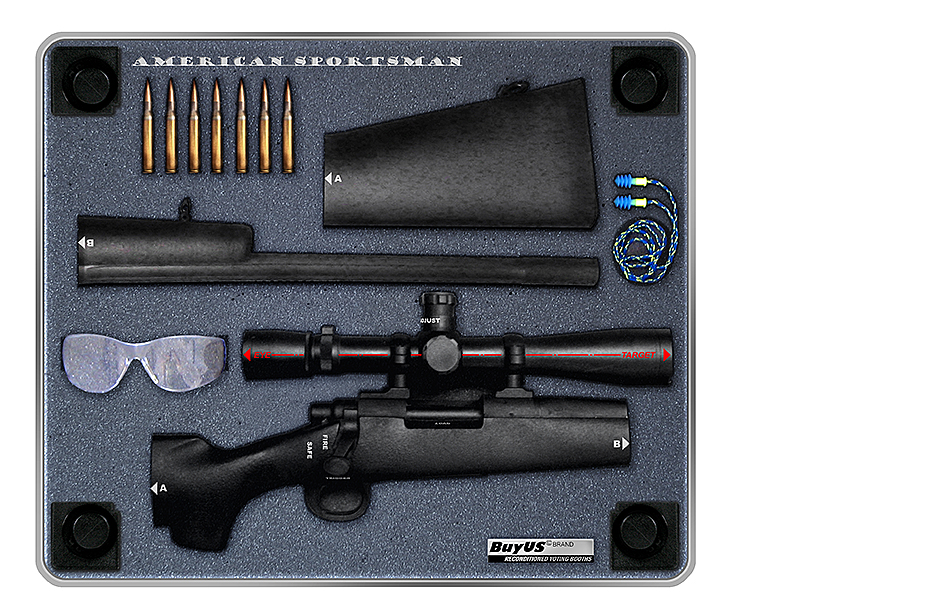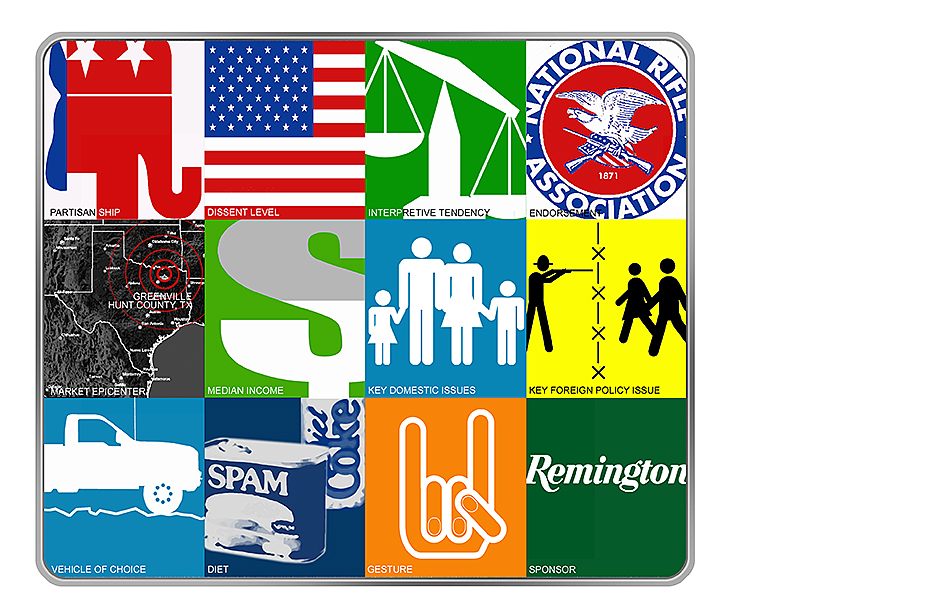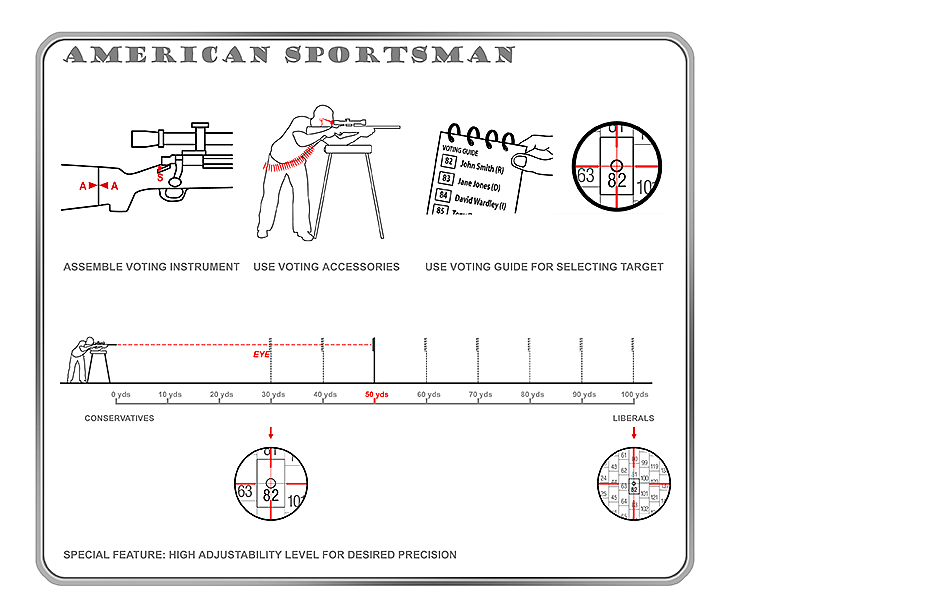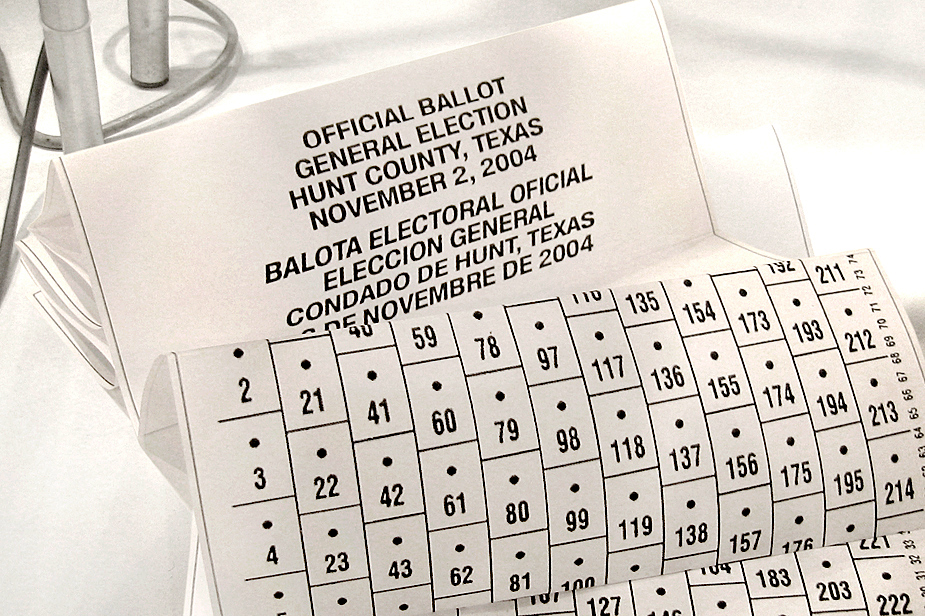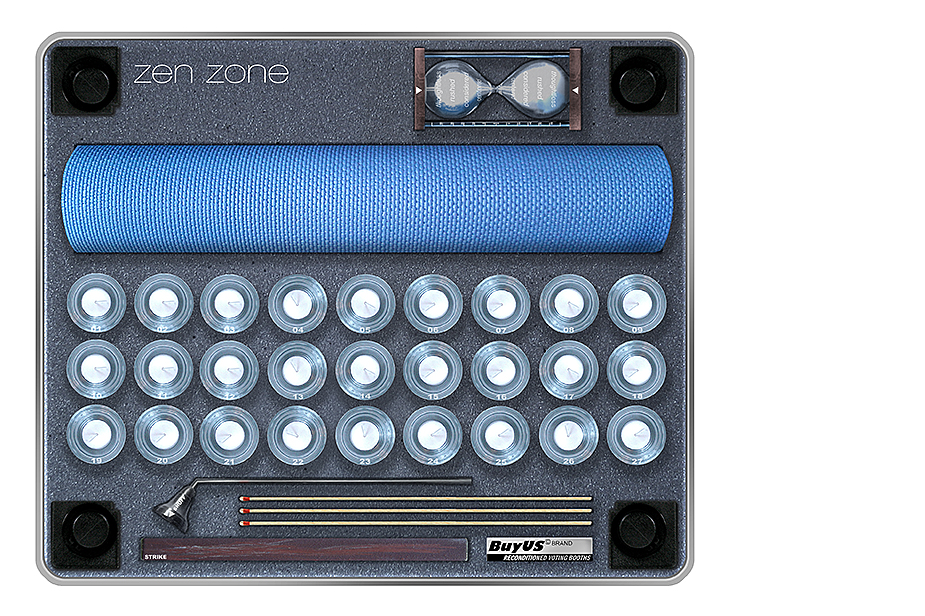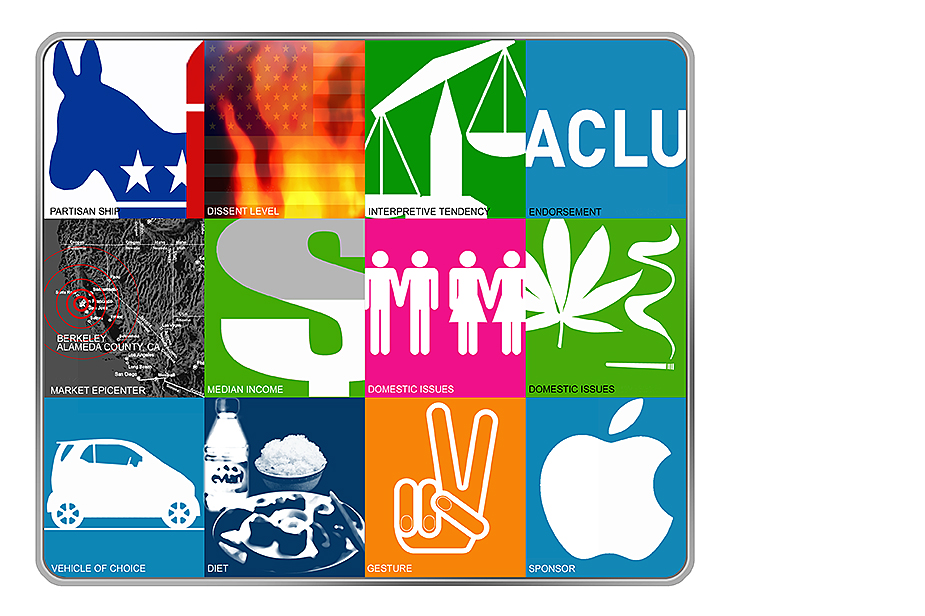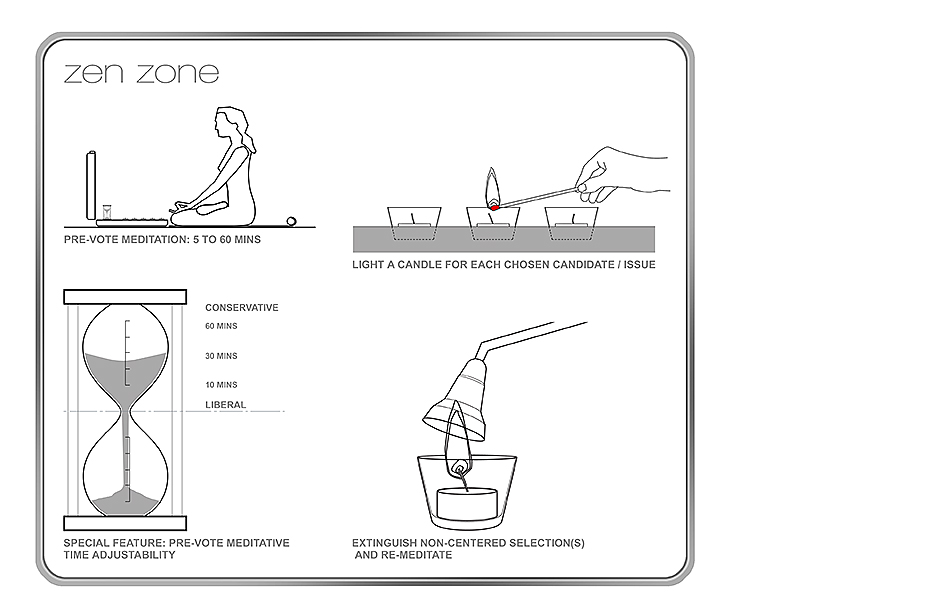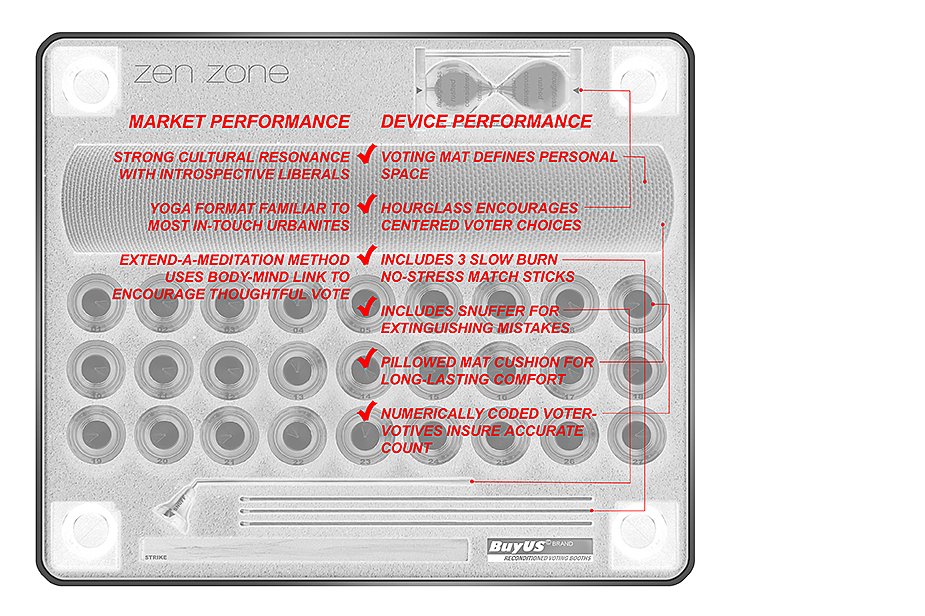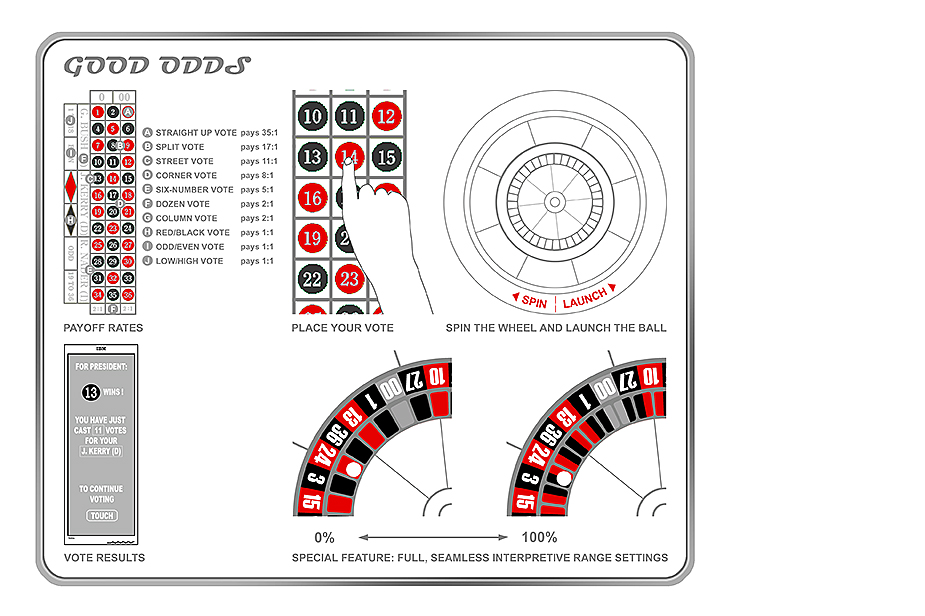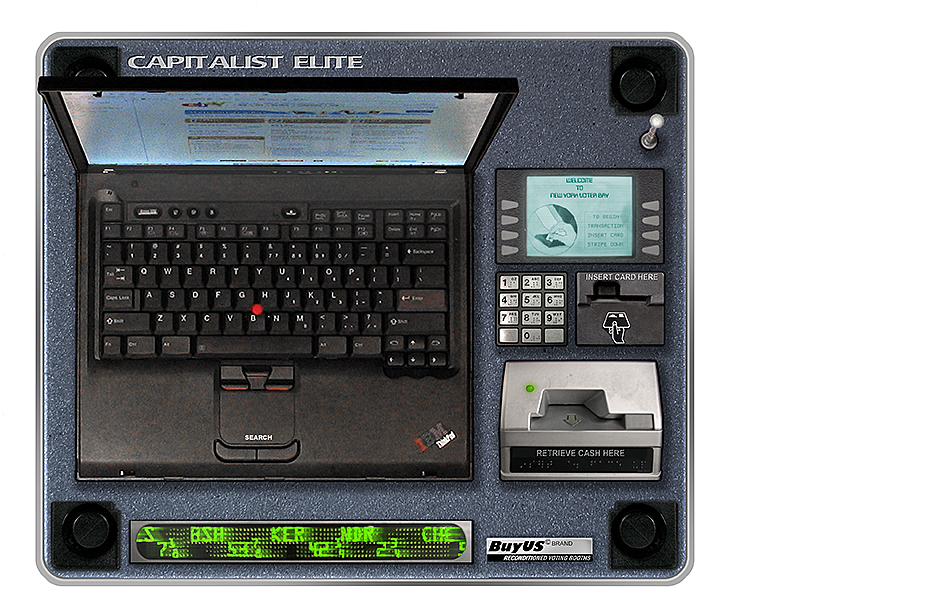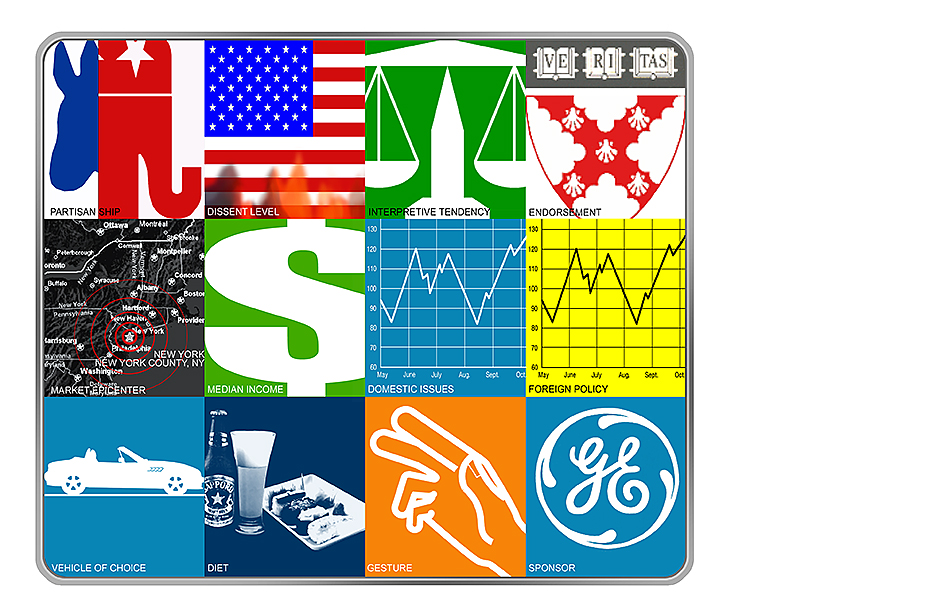BUY US
Parsons School of Design, New York, NY
Proposal 2004Project 2004
Completion 2004
The 2000 Florida election marked the fall of the Votamatic, the infamous voting machine, originally designed in the 1960s, that threw the outcome of the presidential election into chaos, leaving Bush v Gore to sort it out. RLA's project, part of an invited exhibition entitled The Voting Booth Project: Where Democracy and Design Collide, used one of these retired machines in a speculation about how a fictional company, “BuyUS (pronounced “biasâ€) Brand Reconditioned Voting Booths†might retool these voting instruments and market them to local municipalities to help secure culturally consistent election results. Five models are represented in a fictional ad campaign - each with a socio-political bias based on a mix of cultural stereotypes and actual regional market research statistics.
Accompanied by instructions for use, each model includes a series of twelve graphic icons that assist buyers in choosing the model that offers the best demographic fit. This matrix documents market tendencies, from partisanship and patriotism levels to income, vehicles of choice and diet.
The Voting Booth Project, Parsons Gallery, New York, October 8–December 5, 2004. (Catalogue)
Lyn Rice for OpenOffice
Design Associate: Astrid Lipka
Project Team: Anne-Rachel Schiffmann, Jonathan Garnett, Joanna Gulik
Curator: Chee Pearlman
Exhibition Conceived by: André Balazs, Rick Finkelstein, Paul Goldberger, and Ken Lerer
Catalog Design: Pentagram

